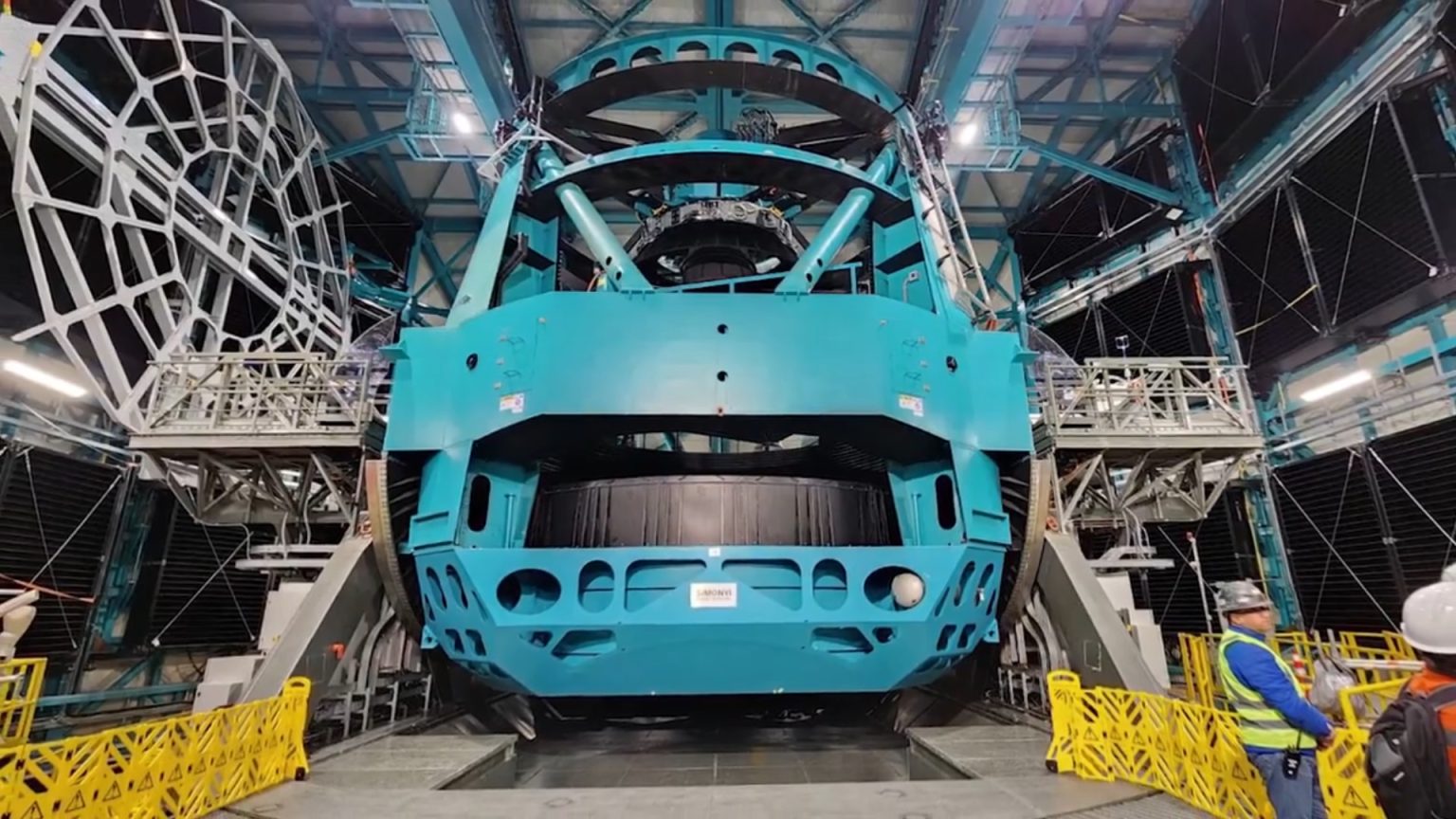The Vera C. Rubin Observatory in Chile has reached a major milestone with the installation of all three of its mirrors, including the combined primary/tertiary mirror and a camera. This achievement marks a significant step forward in the observatory’s 15-year design and construction process. Named after Microsoft software pioneer Charles Simonyi, the wide-field survey telescope is expected to address various astronomical mysteries such as dark energy, dark matter, and the potential existence of a “Planet X” in the solar system.
The primary/tertiary mirror of the Simonyi Survey Telescope measures 8.4 meters wide and utilizes a continuous surface with different curvatures to enhance image resolution within a compact support structure. The secondary mirror, measuring 3.4 meters wide, was installed earlier in the year. Once fully operational, the telescope is projected to generate 20 terabytes of data per night. However, the current iteration of the telescope is still undergoing testing and troubleshooting with a smaller commissioning camera before the installation of the larger LSST Camera.
The University of Washington has been actively involved in the construction and operations of the Rubin Observatory. Key individuals such as Zeljko Ivezic and Mario Jurić are contributing to the project, with a focus on software development to handle the vast amount of data expected from the telescope. Recent progress on the telescope is making the upcoming start of science operations feel more tangible, with the installation of the large mirrors going smoothly.
The construction of the observatory has faced delays, as is typical for large astronomy ventures. Issues such as unexpected actuator damage on the primary/tertiary mirror required repairs, impacting the overall schedule. The commissioning camera is expected to reach a milestone in mid-November, followed by the installation of the LSST Camera in early next year. If all goes according to plan, the Simonyi Survey Telescope will achieve “First Light” in June, with full-scale observations for the Legacy Survey of Space and Time to begin shortly after.
With the completion of the installation of all mirrors and the commissioning camera, the Rubin Observatory is on track to commence its scientific operations in the near future. The University of Washington’s contributions to the project, particularly in software development, are instrumental in preparing for the torrent of data expected from the telescope. Despite the delays and challenges faced during construction, the observatory is making steady progress towards its goal of shedding light on various astronomical mysteries and capturing images of the cosmos.


